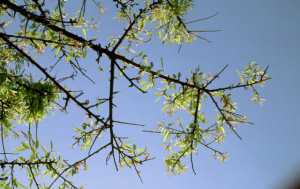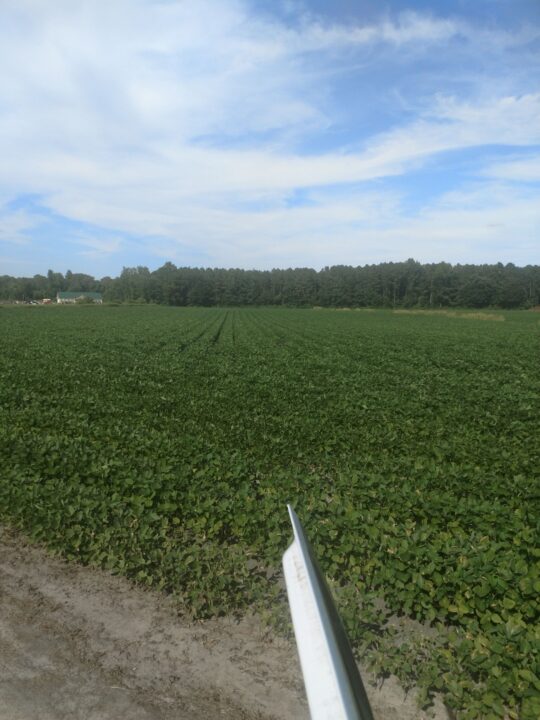Foliar Nutrients Supply A Quick Fix
 When thinking about fertility in your orchard, the first step is to quantify tree nutrient status with a leaf tissue analysis in July to determine if any nutrients are borderline or deficient. Micronutrient deficiencies often show symptoms in only a small part of an orchard, or, if due to weather, may only appear during part of the season. Foliar nutrient sprays can provide quick correction of deficiency and improve tree color and vigor if indeed that is the reason trees were performing poorly in the first place. Here’s a look at several of the nutrients commonly found to be lacking.
When thinking about fertility in your orchard, the first step is to quantify tree nutrient status with a leaf tissue analysis in July to determine if any nutrients are borderline or deficient. Micronutrient deficiencies often show symptoms in only a small part of an orchard, or, if due to weather, may only appear during part of the season. Foliar nutrient sprays can provide quick correction of deficiency and improve tree color and vigor if indeed that is the reason trees were performing poorly in the first place. Here’s a look at several of the nutrients commonly found to be lacking.
■ Potassium (K) deficiency symptoms began to show up recently in some almond orchards. When first leafing out, trees appear pale in color and have small leaves with little new growth. Later, trees show rolled leaves with marginal leaf burning. This symptom is classic when it occurs in the treetop on leaves in the middle of new shoot growth. The Butte variety is a good indicator of this deficiency because it is likely to exhibit leaf scorching before other varieties show symptoms.
Heavy nut set creates significant competition for trees’ potassium resources between shoots and the

Potassium deficiency results in pale leaves with necrotic tips and edges.
(Credit: Jack Kelly Clark, courtesy University of California Statewide IPM Program)
rapidly developing nuts. Normally, potassium leaf levels start the season high, decrease to a plateau in mid-summer, and then fall off at the end of the season. Leaf samples I collected in March in a symptomless orchard had 1.84% potassium – a good level that might be expected for that time of year. In an orchard showing deficiency symptoms, leaf potassium was 0.65% – a figure that would be low even in mid-summer but is especially low early in the season.
Fortunately, potassium deficiency can be corrected at this time of the year by foliar sprays of potassium nitrate when sufficient material is applied. The old standard researched approach using dilute sprays (400 gallons per acre) called for application of 10 pounds of potassium nitrate per 100 gallons of water. This spray was applied at least three times at 7- to 10-day intervals between each application if deficiency correction was to be achieved for the season. This meant 40 pounds of potassium nitrate was applied per acre with each of the three 400-gallon dilute applications for a total of 120 pounds of potassium nitrate per acre. This approach has effectively corrected potassium deficiency.
If you apply 10 pounds per 100 gallons in three concentrate sprays (100 gallons per acre), you apply a total of only 30 pounds of potassium nitrate per acre. Don’t expect to see fantastic results if you have a deficiency showing. If you’re spraying every other row (not good for fungicides or nutrients), your application will be less effective. Three half sprays (every other row) at 10 pounds per 100 gallon only applies a total of 15 pounds of potassium nitrate per acre. A 15-pound total application is a long way from the 120-pound total that University of California researchers found effectively corrected the problem. In a typical concentrate spray applied at 100 gallons per acre, rates of 20 to 30 pounds of potassium nitrate per acre can still be safely applied to almonds.

Foliage damage caused by zinc deficiency.
(Credit: Jack Kelly Clark, courtesy University of California Statewide IPM Program)
■ Zinc (Zn) is part of the enzyme system that regulates terminal growth and plant cell expansion. Trees with severe deficiency may experience dormant flower bud drop and decreased fruit set, will have shortened internodes and small ‘little leaf’ symptoms, and have chlorotic leaves with wavy margins. With mild deficiency, leaves may be slightly smaller than normal with areas of interveinal chlorosis. Young trees can be deficient without showing any visual symptoms, so it is important to get a July tissue analysis even in young orchards. Zinc is deficient if a July leaf analysis is below 15 ppm.
Foliar sprays to correct Zn deficiency are effective and are relatively inexpensive. A spring foliar treatment can be timed once leaves have attained nearly full size. On spring foliage, basic zinc sulfate or zinc oxide sprays are normally safe and effective. Either form can be applied at 5 pounds per 100 gallons of water or at 15 pounds per acre when sprayed at 100 gallons water per acre. Zinc deficiency can also be easily corrected near natural leaf drop in fall with a foliar spray of zinc sulfate (10 to 15 pounds ZnSO4 in 50 to 100 gallons water per acre).
■ Iron (Fe) and Manganese (Mn) are both important in chlorophyll formation so a deficiency of either will show an interveinal chlorosis in young leaves. Deficiencies in iron and manganese are rare in the Sacramento Valley but can be seen occasionally in orchards with soil pH above 7.5, on calcareous soils, or on heavy, poorly drained soils.
Iron deficiency will cause interveinal yellowing with the small leaf veins remaining

Foliage damage caused by iron deficiency.
(Credit: Jack Kelly Clark, courtesy University of California Statewide IPM Program)
green. When severe, leaves will be uniformly yellow throughout the leaf. Iron deficiency may show early in the season and continue until leaves yellow and drop, or it may show in the spring and then gradually disappear as soils warm up and dry out. Leaf analysis is not a reliable indicator of iron deficiency so learn to recognize leaf symptoms. Trees will green up if foliar sprays of Sequestrene 138 iron chelate are applied following label instructions.
Manganese chlorosis appears as a herring bone pattern with major veins green between yellow interveinal areas. Manganese is adequate when July leaf analysis is over 20 parts per million (ppm). Manganese deficiency can be corrected with foliar sprays of manganese sulfate at 2 pounds per 100 gallons water sprayed at 100 gallons per acre. If you have a small problem area, banded soil applications of manganese sulfate at 10 pounds per tree have been effective for longer term correction.
■ Boron (B) plays an important role in pollen growth, fertilization, and fruit set. If you notice gummy almond kernels followed by nut drop (particularly on the Peerless variety), or areas in the orchard with a very light crop and vigorous willowy shoot growth year after year, B deficiency may be the problem. It can be corrected with fall or pink bud sprays of 1to 2 pounds Solubor per 100 gallons of water sprayed at 100 gallons per acre.
B deficiency in severely affected areas in the orchard can also be corrected with a soil application of ½ pound of Solubor per tree broadcast in the tree row. This soil treatment will correct the problem for several years. Hull analysis at harvest provides a better measure of B status than July leaf analysis for this nutrient. Be sure B is deficient (hull B less than 80 ppm or leaf analysis less than 25 ppm) before applying treatments since excess B is toxic to almond trees.









